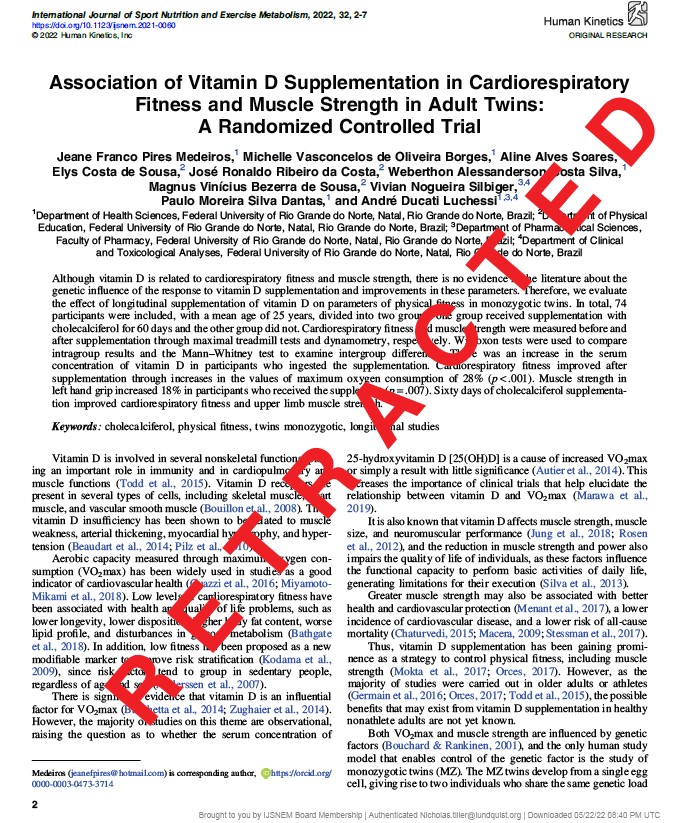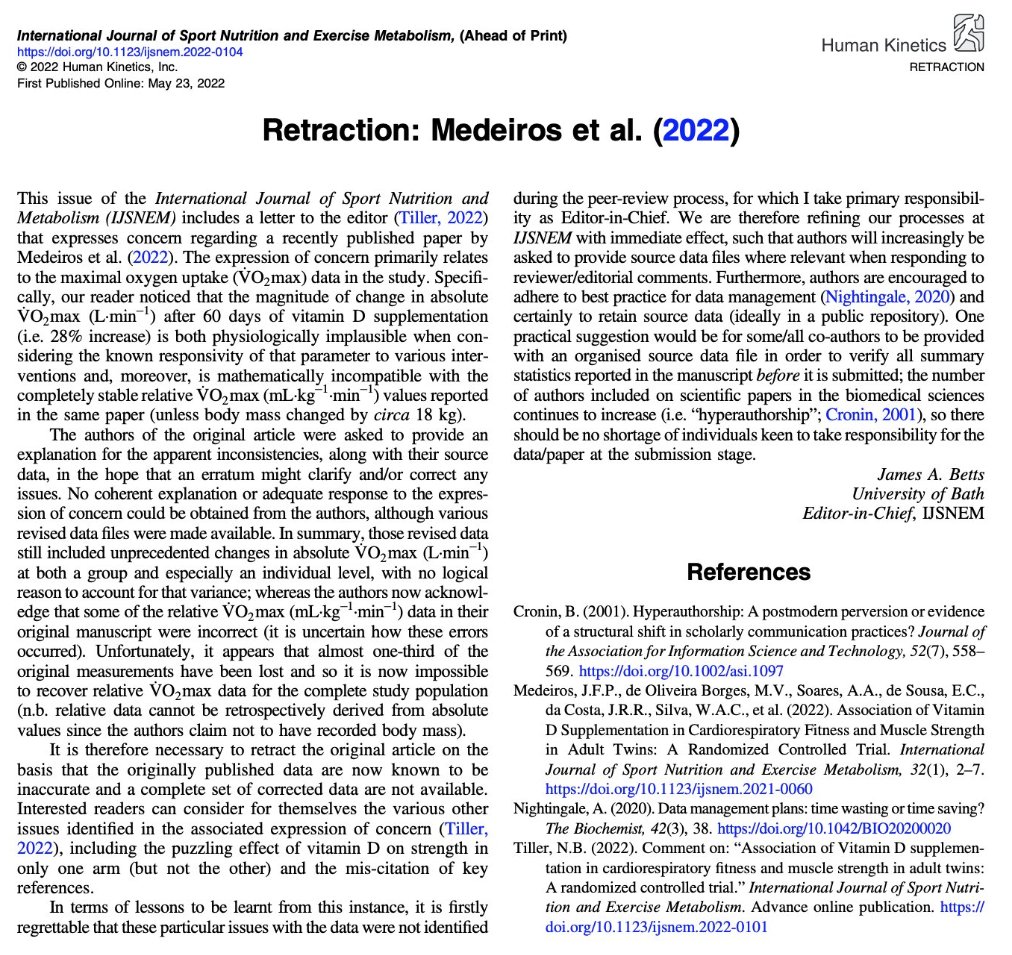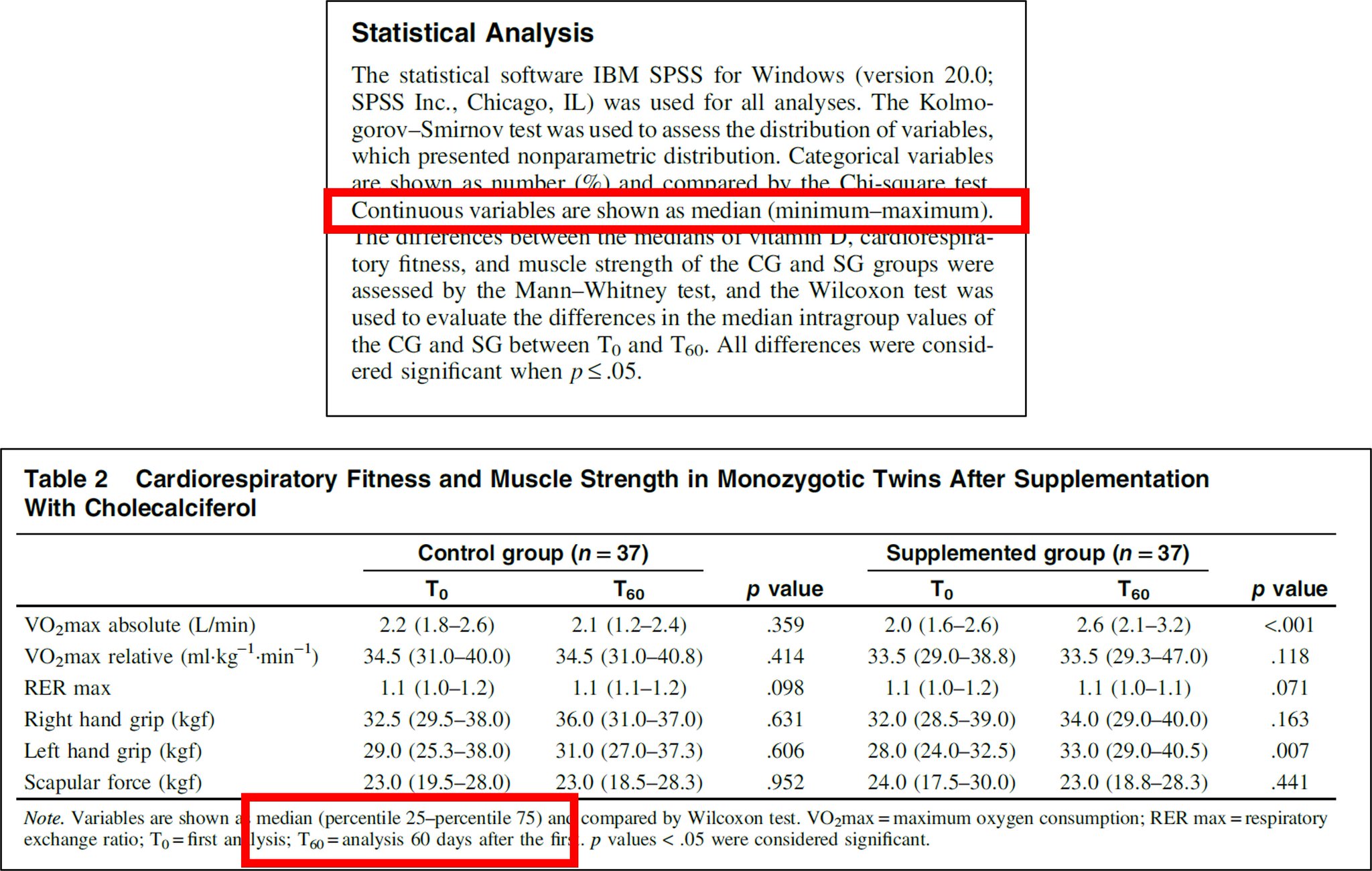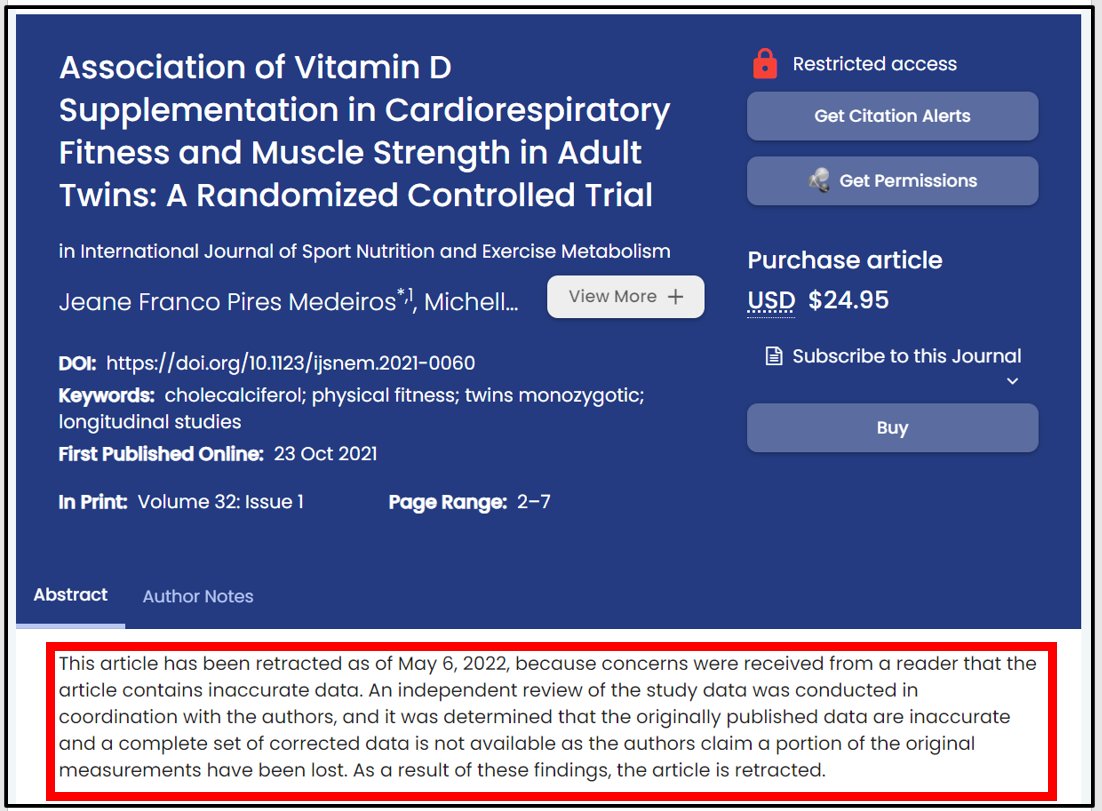Thread
𝐑𝐞𝐭𝐫𝐚𝐜𝐭𝐞𝐝 #vitaminD paper.
"The originally-published data are inaccurate and a complete set of corrected data is not available."
Here's a thread to outline the worrying data irregularities that led to this retraction.
#exercise #science #nutrition #research 🧵1/13
"The originally-published data are inaccurate and a complete set of corrected data is not available."
Here's a thread to outline the worrying data irregularities that led to this retraction.
#exercise #science #nutrition #research 🧵1/13
First and foremost, you can read here the full EIC retraction notice: ♾doi.org/10.1123/ijsnem.2022-0104
♾And my "Letter to The Editor" in which I describe in more detail the most serious/perplexing issues: tinyurl.com/2p8f5mj7
🧵2/13
♾And my "Letter to The Editor" in which I describe in more detail the most serious/perplexing issues: tinyurl.com/2p8f5mj7
🧵2/13
I learned about this study after Dr. Rhonda Patrick (Ph.D. in biomedical science) shared it among her nearly 400,000 Twitter followers who, in turn, retweeted it more than 500 times. 🧵3/13
The authors claim that 60 days of supplementation with low-dose vitamin D increased absolute VO2max (L/min) by 28%. Not only is this unprecedented for such an intervention but there was no associated change in relative VO2max (mL/kg/min). 🧵4/13
The authors didn't report body mass (!?). Still, basic arithmetic shows that an increase in absolute VO2max of this magnitude, without change in relative values, requires an increase in body mass of ~18 kg (~40 lbs) over 60 days. Physiologically impossible. 🧵5/13
The other main outcome was a unilateral increase in handgrip strength with vitamin D (increased strength in the left but not the right arm). Again, the authors claim this result is authentic but provide no valid explanation. 🧵7/13
Crucially, they tested for differences using 𝐚𝐭 𝐥𝐞𝐚𝐬𝐭 14 t-tests without correcting for familywise error. This increases the probability of a false-positive to >𝟓𝟎%. The difference in forearm strength is not significant after a Bonferroni adjustment (p=0.098)🧵8/13
Reporting of data was also inconsistent. Instead of reporting variance as IQR, the authors opted to report median (min-max). However, Table 2 clearly shows median (25th-75th percentiles), indicating that the authors are trying to conceal outliers in the data. 🧵9/13
There were many other concerns with the manuscript, including numerous occasions in which the authors cited references that were non-existent or those that did not support their assertions. See "Letter" for specific examples. 🧵10/13
Link: tinyurl.com/2p8f5mj7
Link: tinyurl.com/2p8f5mj7
Ultimately, the paper was retracted for the reasons outlined by the Editor in Chief.
♾doi.org/10.1123/ijsnem.2022-0104🧵11/13
♾doi.org/10.1123/ijsnem.2022-0104🧵11/13
Despite these obvious issues, the paper had an Altmetric score of 321 at the time of retraction, placing it in the 𝐭𝐨𝐩 𝟓% of all research outputs. It was shared nearly 700 times on Twitter alone. 🧵12/13
It's a symptom of a broader problem in science, but we can learn important lessons: 1) Be skeptical of extraordinary claims unless supported by extraordinary evidence; 2) The devil is in the detail; 3) We must read beyond headlines & abstracts before sharing to social media.13/13








